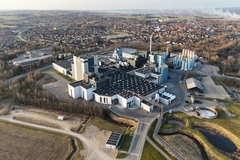
- Industry news
Industry news
- Category news
Category news
- Reports
- Key trends
- Multimedia
Multimedia
- Journal
- Events
- Suppliers
- Home
- Industry news
Industry news
- Category news
Category news
- Reports
- Key trends
- Multimedia
Multimedia
- Events
- Suppliers
Sealed Air's SmartLife Sustainability Initiatives Help Company Move Closer to Zero Percent Waste-to-Landfill Goal

To achieve further progress on its zero waste-to-landfill initiative, Sealed Air is developing programs to find more applications for scrap including using recycled materials in construction, such as concrete blocks and roofing material, and railroad ties.

5/1/2011 --- Sealed Air announced that it has achieved another milestone in its SmartLife sustainability commitments by having 60% of its global manufacturing facilities attain "zero waste-to-landfill" for plastic raw material usage in 2010.
"More than 95% of our plastic raw materials are used to produce saleable products. Much of our success in moving toward zero waste is the result of several programs we have implemented across our global manufacturing supply chain that improve yields and identify beneficial uses for our scrap material," said Vince Herran, Global Recycling Director for Sealed Air.
According to Herran, these programs have resulted in Sealed Air being able to reuse in its own products, recycle into other useful products, or use for energy recovery a large majority of its plastic waste throughout all of its operations. In fact, an improvement of 72% has been realized, based on waste figures from 2002.
"Our SmartLife approach focuses on understanding and improving the environmental profiles of our products and the products that our products protect. We look across the entire life cycle --from material use and energy consumption to CO2 emissions and waste generation," said Ron Cotterman, Executive Director of Sustainability for Sealed Air. "We recognize that this means starting with our own operations and setting goals to eliminate waste by reducing the amount we generate and finding practical uses for all that remains."
To achieve further progress on its zero waste-to-landfill initiative, Sealed Air is developing programs to find more applications for scrap including using recycled materials in construction, such as concrete blocks and roofing material, and railroad ties.










